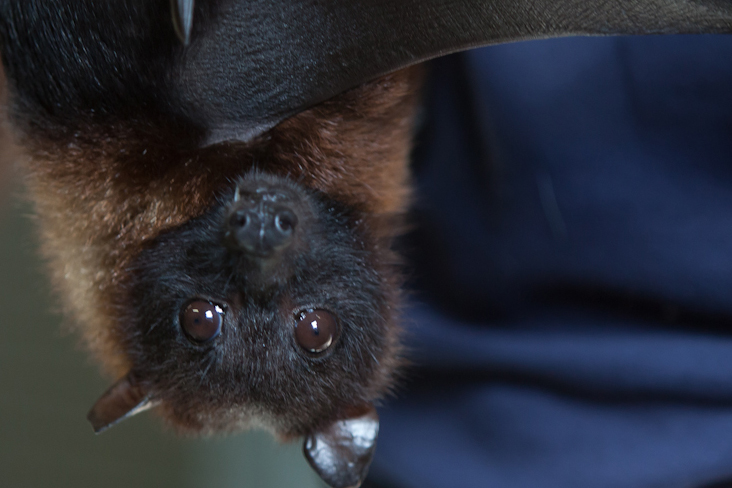It’s true – bats have a bad rap.
They’re best buddies with Dracula and have a cameo in “Macbeth.” They inspire spooky Halloween decorations. And if we’re not careful, we ourselves could become “batty.” They can carry viruses, including (most notably) the coronavirus that spread to humans from wildlife markets as Covid-19.
But then there’s Batman. And those of us who know bats – like here at Northwest Trek and Point Defiance Zoo & Aquarium – know that they truly are the superheroes of the night: zipping effortlessly in the dark using echolocation or cutting-edge wing design, munching their own weight in mosquitoes every night or spreading fruit seeds, and pollinating the world’s plants as they go.
Right off the bat, without batting an eyelid, we’re going to bat for these adorable furry creatures – and this Halloween, we want you to meet ours.
Meet Indy, the Indian fruit bat
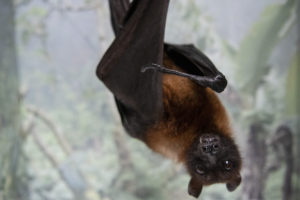
Point Defiance Zoo guests don’t often get to meet Indy – he’s nocturnal, like all bats, and he spends most of the day asleep upside down in his home behind the Wild Wonders Outdoor Theater. But like all bats, he’s a special guy.
Indian fruit bats are some of the largest bats in the world, with a wingspan of four to five feet. Known as “flying foxes” in India, Australia and other countries, fruit bats definitely aren’t foxes – though they are mammals, the only kind that can fly under their own power. That’s because bat wings are uniquely constructed, with stretchy skin, special muscles and the ability to fold during flight (like a human hand can fold). Some can even turn 180 degrees in just three wing beats, and scientists study those aeromechanics to improve airplane maneuverability.
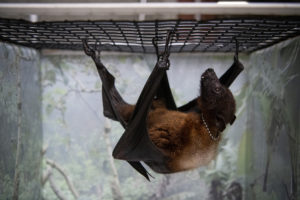
As their name suggests, fruit bats love eating fruit. Indy enjoys lapping up the juice from his favorite fruits, spitting the rest out. It’s not good human manners, but in the wild this eating habit helps spread seeds around the rainforest to grow new trees.
Bats are also important pollinators as they fly from tree to tree, helping ecosystems diversify and thrive.
In some Indian towns, fruit bats are revered as sacred, with colonies living in the same trees for generations alongside villagers. The “flying foxes” of Sydney, Australia are now a tourist attraction in their own right, with visitors staking out key spots to watch the clouds of fruit bats take off at sunset to find food. And beloved children’s book “Stella Luna” stars an Indian fruit bat!
But if they are not protected, big bats like these can also be seen as a source of food – leading to wet markets and the transfer of bat viruses (which are many) to humans.
“We need to protect bats, not fear or kill them,” says Natalie Davis, curator at the Wild Wonders Outdoor Theater. “Like Indy, they’re amazing creatures who are essential to our world’s ecosystems.”
Meet the Northwest Trek bats
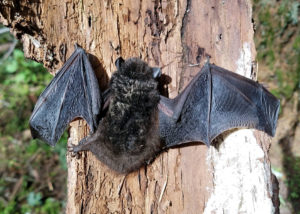
They don’t have names – there are just too many of them! Northwest Trek is home to one of the largest wild bat colonies in the South Puget Sound region: They roost under the eaves of our tram garage, our veterinary clinic, our administration building and around the park, including in all the bat boxes we’ve put on trees.
Yuma myotis, little brown myotis, California myotis, silver-haired and hoary bats, they chitter and squeak as they wake up each sunset to fly out into the forest. We love them, not just because they’re tiny, fuzzy and cute (although they are!) but because they keep us all healthy: Pacific Northwest bats are insectivores, consuming their own body-weight in bugs every night. If we didn’t have bats, we would get eaten alive by mosquitoes – and farmers would have a much harder time growing our food.
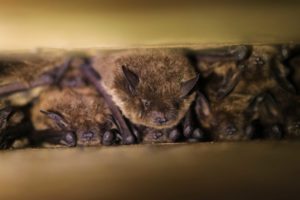
Other American bats also pollinate plants as they fly around. If you drink tequila or admire saguaro, you can thank a bat: They are the key pollinators of agave and cactus plants.
Their other superpower is echolocation, the ability to navigate purely via sound. As bats fly, they emit high-pitched sounds (beyond human detection) which bounce off surrounding objects and return to their ears. Bat echolocation is so sensitive that a bat flying 25 miles per hour in complete darkness could distinguish a junebug from the leaf it sits on. Even Batman couldn’t beat that.
Our bats also help science. We count and study them to look for white-nose syndrome, a fatal disease that is devastating bat colonies around the country. So far, ours are healthy – there’s no health risk to humans – and they are helping scientists understand how to protect their species.
“Bats are astounding animals who pollinate our food and control insects which would otherwise invade us,” says Rachael Mueller, who leads annual bat counts at Northwest Trek. “And everyone can help protect them. Improve bat habitat around your home by reducing outside lighting and protecting trees, streams and wetlands. And protect them from disease by staying away from their roosting sites. We need bats, and like all wildlife we can live in harmony with them if we give them space.”
The bottom line? Bats ARE superheroes of the night – and we can save them. There’s not a moment to lose.
